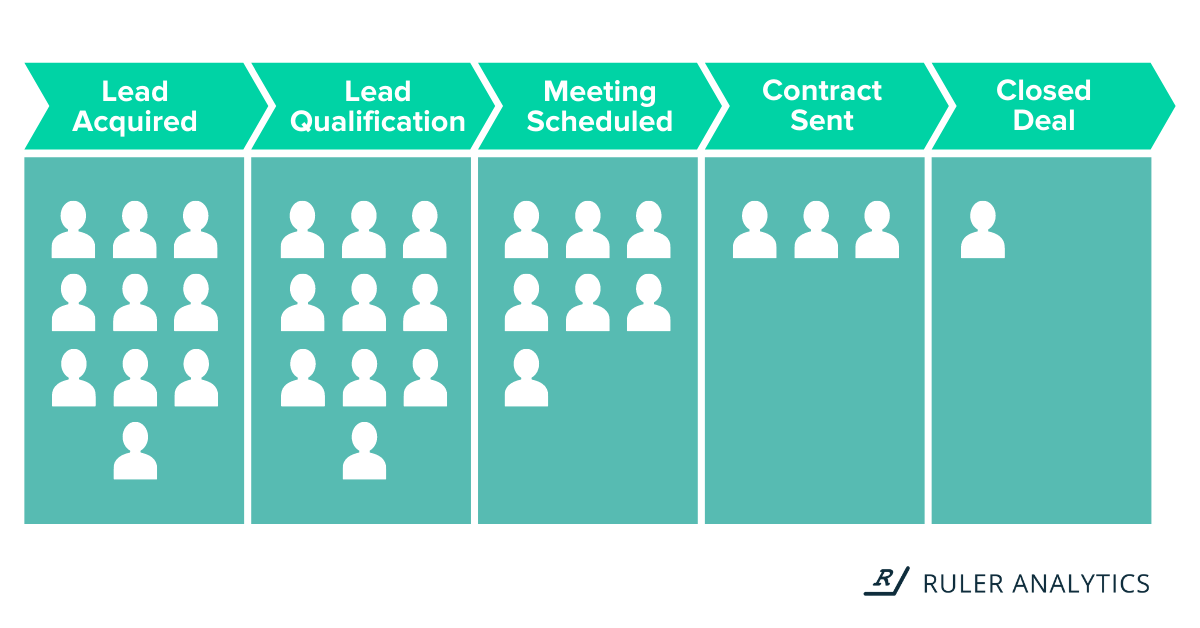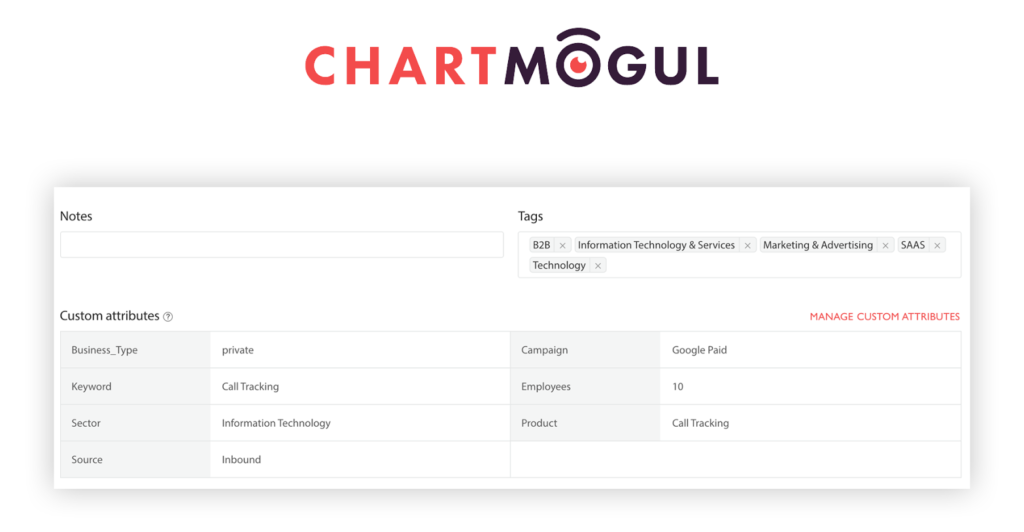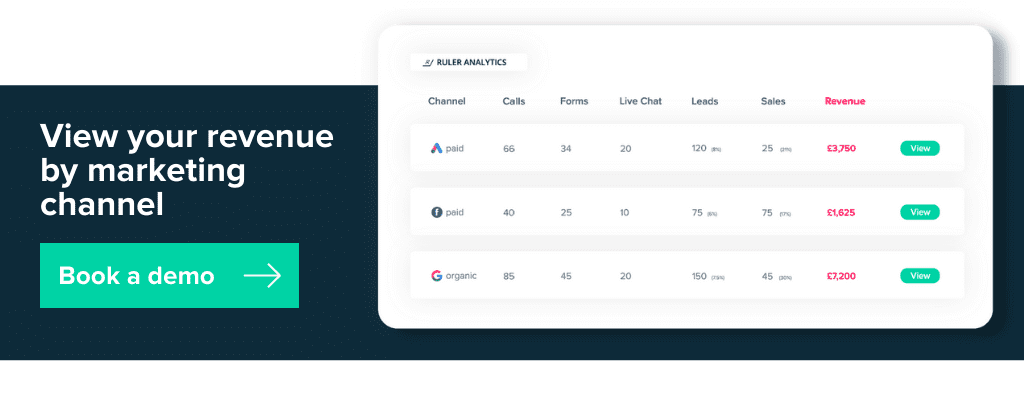Sales opportunity tracking allows you to manage and streamline your pipeline so that you can focus on scaling your profitability. In this article, we show you how to track and measure your sales opportunities and demonstrate your impact on revenue more effectively.
Not all leads will land on your website Monday and convert by Friday.
For some, the sales process can be a lot longer and usually involves more touchpoints to get potential buyers over the line.
For low-cost deals, a B2B sales cycle can take up to three months to close. Whereas B2B sales cycles for higher value deals can fall anywhere between six to nine months.
With sales opportunity tracking, marketers can gain a holistic view of what’s working and uncover crucial insights to convert more opportunities into paying customers.
For this article, we’ll discuss:
Without further ado, let’s jump right in.
💡 Pro Tip
Learn how to track your customer touchpoints, unlock valuable lead, opportunity and sales data across the entire buying cycle and gain key insights to make smarter budgetary decisions.
Download the guide to tracking customer touchpoints
When a lead is qualified and moves down the pipeline, it often becomes a sales opportunity.
As the name suggests, a sales opportunity is a qualified prospect who has shown some commitment to working with your business and has a high probability of converting into a deal or customer.
Sales opportunity tracking and management provides full visibility of the sales process and allows businesses to track all opportunities across the entire pipeline more effectively.
Opportunity tracking, or management, is the core of any successful sales operation.
With effective opportunity tracking, company executives can see exactly how prospects are converting into customers and empower teams to focus on higher-value activities that help move the needle.
To demonstrate the importance of opportunity tracking it helps if we use an example.
Let’s say that you work at a marketing agency and use the following five stages in your sales process:
Let’s say you convert ten leads on your website.
You follow up with all your leads, and seven decide to schedule a meeting to learn more about your services.
After you’ve sat all your meetings, three prospects request a proposal from you, and one accepts and converts into a paying customer.

To bring on one new customer, you would need to capture at least ten leads at the point of conversion. Sounds simple enough, right? However, without opportunity tracking it would be nearly impossible to sum this up.
Studies have shown that opportunity tracking can increase your sales up by 29%.
Effective sales opportunity tracking can help you close more deals with less effort by allowing you to understand:
Proper sales and opportunity tracking is a must-have solution for almost any business.
Without the right strategy and tools in place, however, it can get overwhelming. With that in mind, we’ve listed four steps below to help you get started.
To get started with opportunity management and tracking you must first define and agree on the stages in your sales process.
The foundation of any successful sales operation is an established, well-structured sales pipeline.
Simply put, a sales pipeline is a series of steps that allow businesses to guide prospects from the initial touchpoint to close. Below are some of the most traditional stages you’d see in a sales pipeline.
Related: 22 Sales Pipeline Metrics To Track In 2021 (Advice from 40+ Experts)
No business is the same.
Therefore, every sales pipeline is unique.
Some organisations may opt for a 7-stage pipeline. Whereas organisations with longer sales cycles may require more steps to ensure prospects reach the purchasing decision.
Related: What is a sales cycle and tips to close deals faster
Your sales pipeline is like a well-lit road.
Each lamppost represents a stage in your pipeline.
Without these lampposts, the road goes dark, and you lose complete visibility.
The same goes for your sales pipeline.
Without the right pipeline stages, your leads will enter the sales cycle, and eventually, you will lose track of their whereabouts.
Next, you need to make sure that your leads and customer data are stored in one place so that you can effectively manage every interaction along the path to purchase.
CRMs are a popular choice, as they essentially offer a central place where businesses can store opportunity data, track customer interactions and share key information with stakeholders.
Related: The shifting role of the CRM in marketing
Most CRMs have dedicated tools that make the process of building your sales pipeline a whole lot easier.
Your sales opportunities will likely come from many directions and sources.
Capturing data from multiple marketing sources in your CRM will help you identify which channels drive the most qualified sales leads.
You can then make smarter decisions about the top of your funnel and focus on the marketing sources that you know will result in downstream activity.
While seemingly straightforward, the process of tracking lead sources in your CRM and making sense of it all can be overwhelming without the right processes in place.
Related: How to track marketing lead source data (+ attribute revenue)
Using a marketing attribution tool like Ruler, you can match leads with their marketing touchpoints and automatically send this data to your CRM.
You can populate your pipeline with both conversion and marketing data, and definitely prove your impact on downstream activity.
💡 Pro Tip
Want more on Ruler? See exactly how it tracks customer touchpoints and connects the dots between marketing and sales.
Everything your can discover in Ruler
When an opportunity is won, you need to find a way to connect this information with other applications, so that you can visualise the impact of your marketing efforts on wider company objectives.
For example, at Ruler, we use our platform and revenue management system, ChartMogul, to track and report on revenue driven by our marketing activities.
Related: How Ruler uses ChartMogul to close the loop between marketing and revenue
In ChartMogul, we’ve set up custom fields and marketing source data is passed from our attribution solution and CRM so that we can see more than which campaigns generated the most qualified leads.

ChartMogul also connects directly with our payment processor. So, every month, the revenue we are generating from each customer gets attributed back to all of the data we have, allowing us to track and report on subsequent sales.
The nature of lengthy sales cycles, unfortunately, means businesses don’t get a true reflection of how well a campaign performed until weeks, months, or even years after the initial lead.
A lot of customers use Ruler Analytics to evidence the effectiveness of their campaigns, specifically for products and services that tend to see long sales cycles.
With Ruler’s opportunity stage report, you can analyse the effectiveness of campaigns at every stage of your sales pipeline, and can:
Further support documentation on the opportunity stage can be found here.
With effective opportunity tracking and management, you can prove the effectiveness of your marketing and establish yourself as a valued member of the team.
Using a tool like Ruler, you can combine marketing with pipeline activity to track every touchpoint that a user engages with across multiple channels and campaigns before converting into a sale—and beyond.
How do you track your sales opportunities? Reach out and let us know. Or, for more information about Ruler’s opportunity attribution, book a demo with one of our sales reps.

This article was originally posted in May 2021 and last updated on 28th April 2022 for freshness.